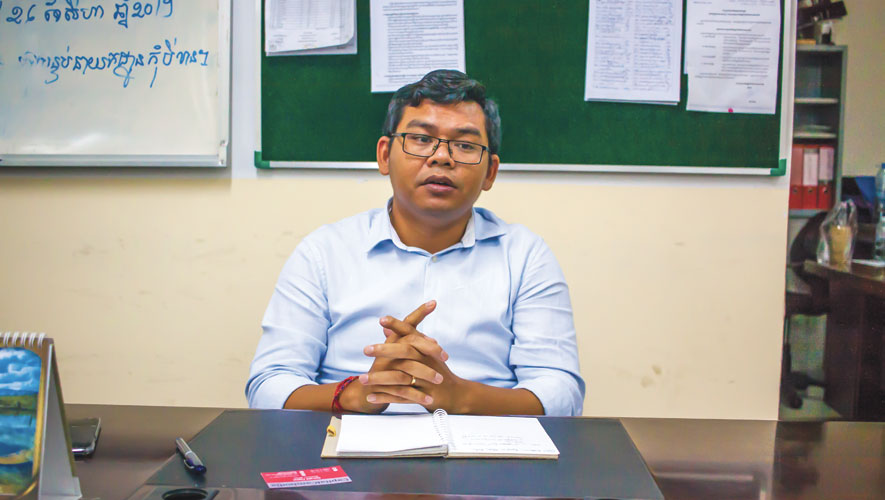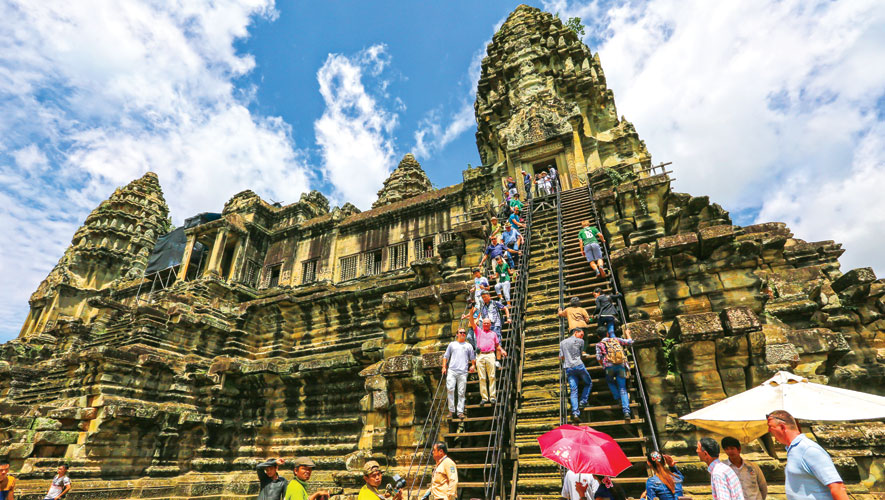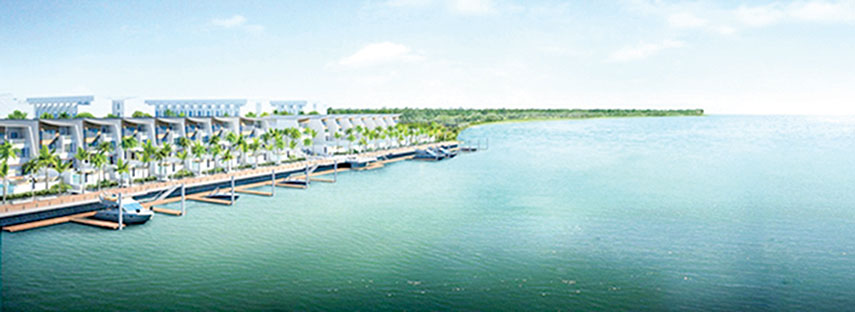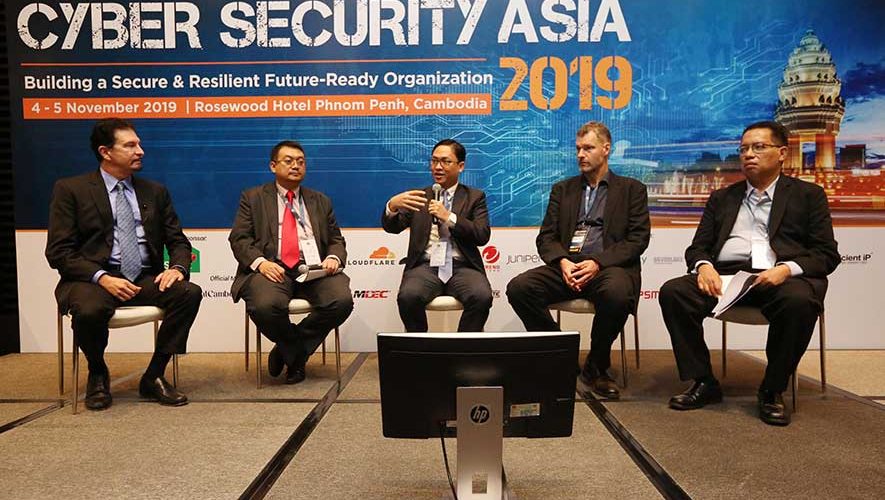Authorities say it will not affect heritage sites
For the latest Cambodian Business news, visit Khmer Times Business
A new city planned for Siem Reap province will include a commercial hub, tourism facilities, a logistics zone, high-rise buildings, businesses and shopping centres and an as-yet unspecified number of homes, according to an official from the Tourism Ministry.
The municipality will be located around 60 kilometres east of the capital, also called Siem Reap.
The project has recently been included in the Siem Reap Master Plan 2035, which is now about 60 per cent complete and will be fully revealed by the first quarter of 2020, says Chuk Chamno, spokesperson for the Ministry of Tourism.
Chuk says the project was proposed by Tourism Minister Thong Khon during a meeting of an inter-ministerial committee in September.
“The government is allowing the ministry of tourism to study the master plan to develop Siem Reap province.
However, in the master plan, we are preparing a new city for Siem Reap which is located in a suitable location allowing high-rise buildings that will not affect the value of the heritage in the province,” Chuk says.

Boosting economy
“The main purpose of establishing the new city of Siem Reap is to expand the potential of the tourism sector, tourism products and attract more investors while boosting business activities and the economy of the province,” he adds.
“We cannot disclose the precise locations and other amenities to be built because they are still being studied,” says Chuk. “We will wait and see the report by early next year.”
According to a report by Cambodia’s property service CBRE, the population of Siem Reap province is 1.096 million, of which 250,000 people live in the capital. There are 1,054 international flights monthly and 256 domestic flights.
There are around 14,500 hotel rooms and 240 properties.
Sinan Thourn, chairman of the Pacific Asia Travel Association (PATA), says that new city of Siem Reap should have been planned many years ago. He adds it is important the government keeps the new city far from Angkor Wat so the latter can regain all its historic appeal.
“Now the current ancient city has beer gardens, karaoke and night clubs, so the night light and civilisation city should be located elsewhere and the existing one should be preserved,” Thourn adds.
Drop in visitors
The new city of Siem Reap has been proposed because of the drop in tourists visiting the Siem Reap-Angkor destination. To tackle the decline, members of the inter-ministerial committee outlined a short-term strategy for 2019-2020 under the slogan “Turning challenges into opportunities”.
According to the tourism ministry, the strategy has multiple goals, including diversifying new tourism products, extending the stay of tourists and redefining the province’s identity. As part of the strategy, Tonle Sap Lake, Kulen Mountain, Siem Reap city and surrounding areas will be further developed as tourist destinations.
Chuk says that the new city of Siem Reap has been endorsed because the existing city is a heritage province and the architecture and constructions are well-planned.
“Once the new city of Siem Reap is approved, it will have investment, commercial and other business activities to contribute to the economy while the old Siem Reap city will serve the tourism sector, culture and the wellbeing of the people who live there, so we can preserve it for the tourists to relax,” Chuk adds.
Speaking at a forum on the future of Siem Reap held at Raintree Phnom Penh Hotel last week, James Hodge, CBRE Cambodia director, said real estate developers in the city are looking east, where, because of the distance from Angkor Archaeological Park, restrictions on high-rise developments do not apply.
Large development
“We are seeing some levels of decentralisation, most spreading outward. Particularly we can see movement towards the east of Siem Reap along the national road as well as the new road. These locations appear to be where the city is heading,” Hodge said.
Developments on the way in the city include a new urban centre complete with a new international airport, ring road renovations, a 70-hectare solar power station, a floating market and resort complexes, says Hodge.
The east of the city is already home to the Song Saa Reserve and community-based development in Bakong Village and will soon welcome an Angkor Wildlife and Aquarium, he notes.
“The new city is in quite a separate location. It is 60 kilometres away from the existing city. If it does happen, it will certainly increase the land value considerably.
“We are also looking at the types of real estate that are being developed there. It is not just hotels but also residential projects. They are also tapping into the office, commercial and retail sectors, as well as education and healthcare provision,” Mr Hodge says.
Protecting religious sites
Currently, the eastern side of the city is attracting huge construction projects and presents notable advantages over other parts of the city. While the north and the west areas have regulations to protect temples and other religious sites, and southern areas are prone to flooding, the east has plenty of land for construction, says Chhayleang Nguon, Pointer Property chief executive officer, the company behind the project in Bakong village.
It is also well connected to the city centre by several roads, including a ring road. Other strengths of this side of the city are that it already has a good network of roads and it is close to the existing international airport and the land is cheaper, Nguon adds.
Land prices in Siem Reap city have increased by 50 per cent in the last two years, reaching $50 per square metre, says Nguon.
He adds that the performance of real estate in Siem Reap in closely linked with tourism: so long as tourists keep coming, demand for accommodation in the city will be on the rise, he notes.
“More tourists means more job opportunities and increasing demand for houses. Developers should not just build houses but should also build tourism products to support growth in the sector,” he added.
The question has popped up whether the new city of Siem Reap will become the next Sihanoukville which has many casinos.
‘No new Sihanoukville’
“I do not think the new city will become the new Sihanoukville with casinos. The government has some protection commitments in Siem Reap – the new Siem Reap airport designed to be built 40 kilometres away, probably the government will not accept any casino investment in the city centre,” says Guillaume Massin, a partner at DFDL, told the audience during the Raintree forum.
He adds, “That being said, we need to attract some people and make sure they stay. We need to diversify activities and if casinos are becoming one of the main competitive advantages that Cambodia has, then it is a risk, but I think that because of the culture of Siem Reap, then probably Cambodians are resistant to that – I hope.”
The real-estate expert Hodge, however, says that the existing plans and regulations would probably protect the existing city centre sufficiently to not permit casinos.
“So far we’ve seen various casino operating developers looking at the Siem Reap market, but they’ve not been able to get licensing,” Hodge adds.
He points out there is scope for a hospitality business and a casino development would probably find a lot of support from larger developers because “as we can see with Sihanoukville there is significant money to be gained from that market”.
He says casinos drive demand from Chinese residential development companies but in terms of central Siem Reap it’s very well protected at the moment, comparatively.
Sustainable development
“For low rise buildings, the regulations are among the strongest in Cambodia,” says Hodge. “The provincial and central government seem to be supportive of maintaining a sustainable route for development. I think lessons have been learned in part from what has happened in Sihanoukville and I can’t see that repeating here.”
On top of that, Thourn says that no other part of Siem Reap province is allowed to have a casino so the government will not allow one. He asks, “Where is the casino market in Siem Reap? Mostly, casinos are allowed to operate along the borders because they target Vietnam and Thailand’s markets, while Phnom Penh and Sihanoukville market are targeting the Chinese market, so Siem Reap doesn’t need casionos.
“The new city could be a commercial city, so we separate the temple city.
The Tourism Ministry’s spokesperson Chuk Chumnor says the new city of Siem Reap will create clear zonings such as a logistics hub, waste management area, an electricity and water system and investment and commercial zones.
Value of heritage
“We welcome all investors to join the development and invest in the new city of Siem Reap, but those investments must be aligned with the identity of Siem Reap province. We will allow any investment that does not affect the value of the heritage of the province,” he adds.
In the first nine months of the year, 3.2million tourists visited Siem Reap province, a drop of about 27.5 percent compared with the same period in 2018. The value of Angkor ticket sales dropped about 13 percent in the first nine months of 2019 after prices were raised substantially.




